Porcelain teapots have long stood as a tea culture symbol of elegance and tradition. Originating in ancient China, these teapots showcase exquisite craftsmanship and have become beloved worldwide for their timeless beauty and practicality. Porcelain, known for its smooth and non-porous surface, is an excellent material for tea brewing due to its superior heat retention and aesthetic appeal.

It helps maintain the tea’s warmth while preserving its delicate flavors, making it a popular choice among tea enthusiasts. Furthermore, the sheer variety of designs and intricate patterns found on porcelain teapots adds a sense of artistry to every tea session. This article aims to provide a comprehensive guide on how to use porcelain teapot properly, ensuring you achieve the best tea experience by unlocking the full potential of this elegant brewing vessel.
Understanding Your Porcelain Teapot
Types of Porcelain Teapots
Porcelain teapots come in various designs, influenced by cultural traditions and aesthetics. Classic Chinese and Japanese porcelain teapots are often more miniature, emphasizing a minimalist and functional approach to tea brewing, particularly for loose-leaf teas.
These traditional designs often feature intricate hand-painted artwork or delicate patterns that reflect cultural heritage. On the other hand, Western porcelain teapots tend to be larger and focus on visual elegance, frequently adorned with floral patterns, gold accents, or modern minimalist styles. When selecting a porcelain teapot, consider the cultural background and style that best complements your tea-drinking habits.
Porcelain vs. Other Materials
Porcelain teapots stand out due to their excellent heat retention and smooth finish, making them ideal for brewing delicate teas like green or white. Compared to glass teapots, porcelain retains heat more effectively and offers better protection against light, which can degrade tea leaves’ flavor.
Unlike ceramic teapots that may have a thicker, more rustic design, porcelain is generally more refined and lightweight. Cast iron teapots, while extremely durable and excellent at retaining heat, can be cumbersome and might influence the flavor of certain teas. Porcelain balances functionality and elegance, making it a versatile choice.
Capacity and Usage Considerations
When choosing a porcelain teapot, size matters. Small porcelain teapots, often used in traditional tea ceremonies, are perfect for single servings or intimate gatherings, allowing for precise control over the brewing process.
Larger teapots cater to family gatherings or group settings, offering convenience for brewing multiple servings at once. Consider your brewing preferences and the number of tea drinkers to select the most appropriate size for your needs, ensuring a seamless and enjoyable tea experience every time.
Preparing the Porcelain Teapot
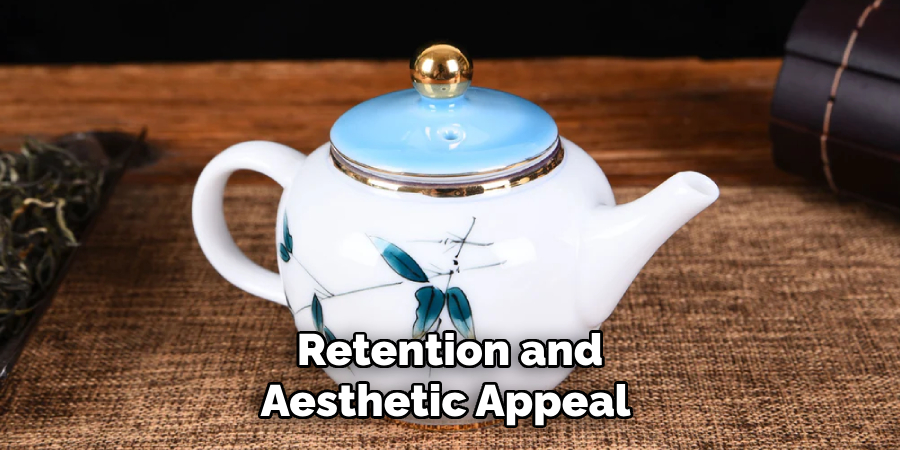
Proper preparation of your porcelain teapot is essential to ensure a flavorful and satisfying tea experience. Follow these steps to maintain your teapot’s quality and get the most out of your brewing process.
Cleaning Before First Use
When you first acquire a new porcelain teapot, cleaning it thoroughly before use is important. Start by rinsing the teapot with warm water and washing it gently with a mild soap. Avoid using abrasive scrubbing pads or harsh chemicals, as these can damage the delicate surface. After cleaning, rinse the teapot thoroughly to ensure no soap residue remains, and allow it to air dry completely.
Pre-warming the Teapot
Pre-warming your porcelain teapot is a key step in the tea brewing process. Rinse the teapot with hot water before adding your tea leaves or hot water. This helps maintain an optimal brewing temperature, ensuring an even extraction of flavors from the tea leaves. Pre-warming is particularly important for delicate teas such as green or white tea, which benefit from precise temperature control.
Selecting the Right Tea
Porcelain teapots are versatile and can accommodate a wide variety of teas. They are especially well-suited for green, black, oolong, and herbal blends. The smooth, non-porous surface of porcelain allows the true flavors of the tea to shine without absorbing previous brews’ aromas, making it an excellent choice for exploring different types of tea.
How to Use Porcelain Teapot: Brewing Tea in a Porcelain Teapot
Measuring the Tea Leaves
The first step in brewing tea in a porcelain teapot is accurately measuring the tea leaves. A general rule of thumb for loose leaf tea is one teaspoon of tea leaves per 8 ounces (240 ml) of water.
One bag typically suffices for the same amount of water if using tea bags. However, it’s important to adjust the quantity based on the teapot size and the type of tea used—stronger teas like black and oolong may require slightly fewer leaves, while more delicate teas like white or green tea may benefit from slightly more. Experimentation and personal preference are key to achieving the perfect cup.
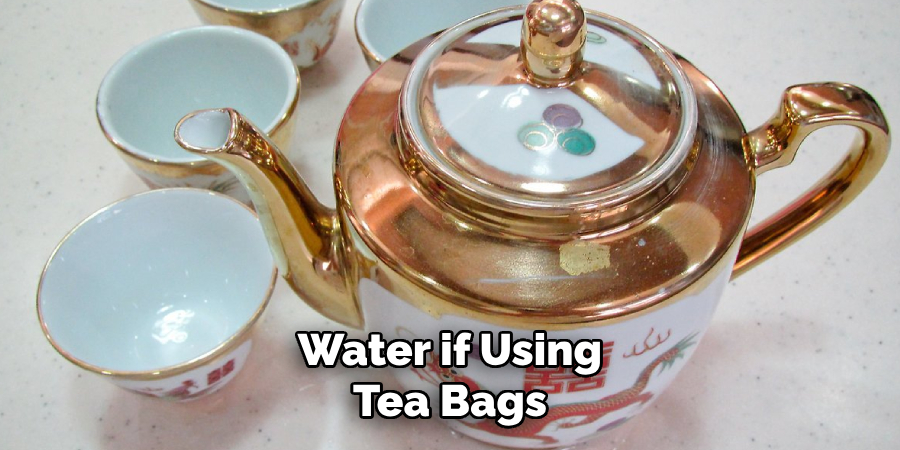
Heating the Water
Water temperature plays a pivotal role in tea brewing. Different teas require specific temperatures to bring out their optimal flavors. Green tea and white tea are delicate and should be brewed with water between 160°F and 185°F (70°C-85°C), while black and oolong teas perform best between 190°F and 205°F (90°C-96°C).
Herbal teas, on the other hand, can be steeped with boiling water at 212°F (100°C). Using a kettle with a c can make this process more precise, ensuring each tea type is brewed to perfection.
Steeping the Tea
Steeping times are crucial to avoid over-extraction, which leads to bitterness, or under-extraction, resulting in weak flavors. Green teas typically steep for 1-3 minutes, black teas for 3-5 minutes, and oolong teas for a similar range. Herbal teas often require a longer steeping time, around 5-7 minutes, to fully extract their flavors.
When brewing, you can use an infuser for easy cleanup or allow the leaves to float freely in the teapot, resulting in a richer flavor. If using free-floating leaves, be prepared to strain the tea before serving.
Straining and Pouring the Tea
For a perfect cup, proper straining is essential when free-floating tea leaves are used. A fine mesh strainer can help catch all the leaves while pouring the tea into cups. When pouring, hold the teapot at a slight angle to maintain a smooth flow and avoid spills.
Porcelain teapots are especially effective at retaining heat, so work carefully to prevent any drips or splashes that might mar the presentation. Mastering these simple pouring techniques enhances not only the aesthetics but also the overall tea-drinking experience.
Serving and Enjoying Tea
Choosing the Right Teacups
Selecting the proper teacups to pair with your teapot can significantly elevate the tea-drinking experience. Porcelain teacups are a timeless choice, offering both elegance and functionality. Their ability to retain heat complements porcelain teapots, creating a cohesive and refined setup. For a more modern touch, glass teacups reveal the tea’s vibrant hues, enhancing the visual allure of the experience.
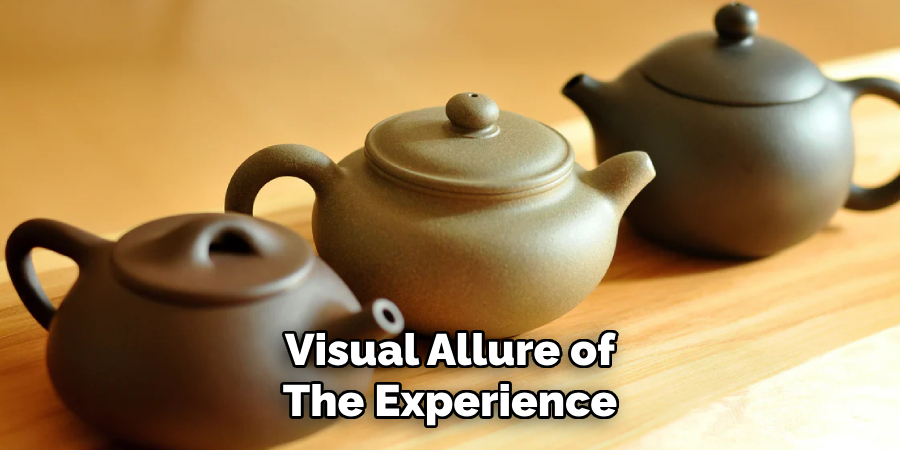
Pairing with Snacks
A delightful tea session is incomplete without a thoughtful selection of snacks. Traditional choices like buttery scones, crisp biscuits, or finger sandwiches are perfect for afternoon tea.
For an Asian-inspired tea experience, consider pairing your tea with delicacies like mochi, sesame seed cookies, or spring rolls. The interplay between the flavors of the tea and its accompaniments enriches the sensory satisfaction of the occasion.
Tea Etiquette and Presentation
Proper tea etiquette and presentation are key to ensuring a memorable experience for your guests. Start by holding the teapot firmly yet gracefully, ensuring a smooth pour into each cup.
Always serve your guests first, following the proper order, before pouring for yourself. Use coasters or small saucers beneath the cups to maintain cleanliness and enhance the visual presentation. Paying attention to these small details reflects care and respect, adding warmth and sophistication to the tea ritual.
Caring for Your Porcelain Teapot
Proper care for your porcelain teapot is essential to maintain its beauty and functionality over time. By following these simple steps for cleaning, maintenance, and storage, you can ensure your teapot remains in excellent condition for years to come.
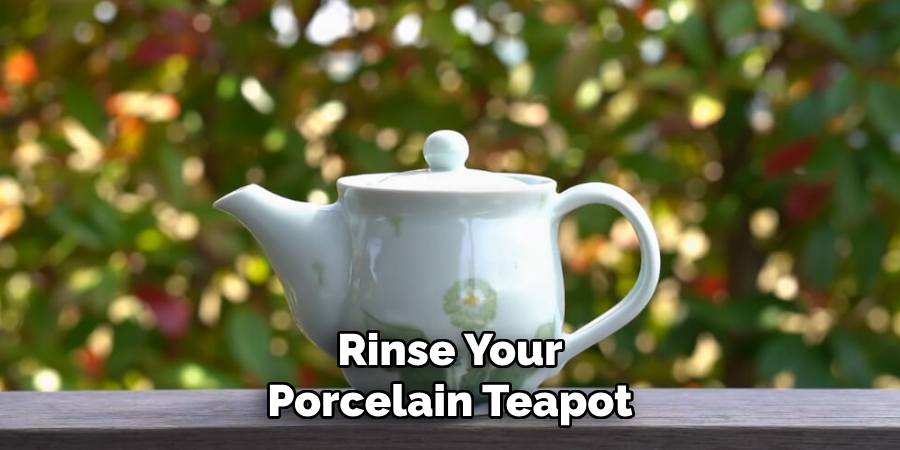
Daily Cleaning Routine
After each use, rinse your porcelain teapot with warm water to remove any tea residue. Avoid using abrasive scrubbers that could scratch the glaze. Instead, use a soft sponge to clean the interior and exterior gently. Allow the teapot to air-dry completely or pat it dry with a soft, lint-free cloth. This will help prevent water spots and maintain its shine.
Deep Cleaning Methods
Over time, tea stains may develop on the interior of your teapot. To remove these, create a paste using baking soda and water, then gently scrub the stained areas. Alternatively, fill the teapot with a mixture of warm water and white vinegar, letting it sit for 15-20 minutes before rinsing thoroughly. For stubborn stains, use a gentle porcelain-safe cleaner to restore its original luster.
Storage Tips
When not in use, store your porcelain teapot in a cool, dry place, preferably on a padded or non-slip surface to prevent accidental chipping. Avoid stacking heavy items on or around it. Using a cloth bag or box for storage can offer extra protection, preserving your teapot’s delicate finish. Proper storage safeguards it from cracks, ensuring its longevity.
Common Mistakes to Avoid
Using Boiling Water for Delicate Teas
Using boiling water can be detrimental for delicate teas such as green, white, or certain herbal blends. High temperatures can scorch the leaves, resulting in a bitter taste and diminishing the intricate flavors these teas are known for. Instead, aim for water temperatures between 160°F and 185°F to ensure a smoother and more refined cup.
Leaving Tea Leaves in the Teapot Too Long
Oversteeping your tea can lead to undesirably strong and bitter flavors. Once the steeping time recommended for the specific tea has passed, remove the leaves or pour the tea into another vessel. This ensures a consistent flavor and avoids ruining the intended delicate balance.
Not Pre-warming the Teapot
Failing to pre-warm your teapot can lead to uneven brewing, as the cold vessel cools the water temperature almost immediately. Simply pouring hot water into the teapot and letting it sit for a minute before adding tea leaves will help enhance the flavor and brewing efficiency.
Using Harsh Detergents
Strong cleaning agents on your porcelain teapot can damage its glaze and delicate surface. Opt for mild soap and warm water instead to preserve its integrity and maintain its elegant appearance over time. Avoid abrasive sponges that may scratch or dull the finish.
Tips for Enhancing Your Tea Experience
Experimenting with Different Teas
Exploring a variety of teas allows you to discover unique flavors and aromas that suit your personal preferences. From the robust notes of black tea to the delicate floral tones of oolong, experimenting with different blends can expand your appreciation for this ancient beverage. Try loose-leaf options, herbal infusions, or rare regional teas to uncover new favorites.
Adjusting Steeping Times
Fine-tuning steeping times can be a game-changer for achieving your ideal cup of tea. Shortening steep times can soften strong flavors, while extending them may bring out bolder and more pronounced notes. Pay attention to how steeping affects the tea’s taste, and experiment until you achieve the balance that perfectly complements your palate.
Using Filtered Water
Water quality plays a crucial role in the flavor of your tea. Using filtered water can remove impurities and enhance your brew’s clean, natural taste. Avoid hard or heavily chlorinated water if possible, as they can interfere with the tea’s subtler flavor profiles. Filtered water ensures that the unique characteristics of each tea shine through.
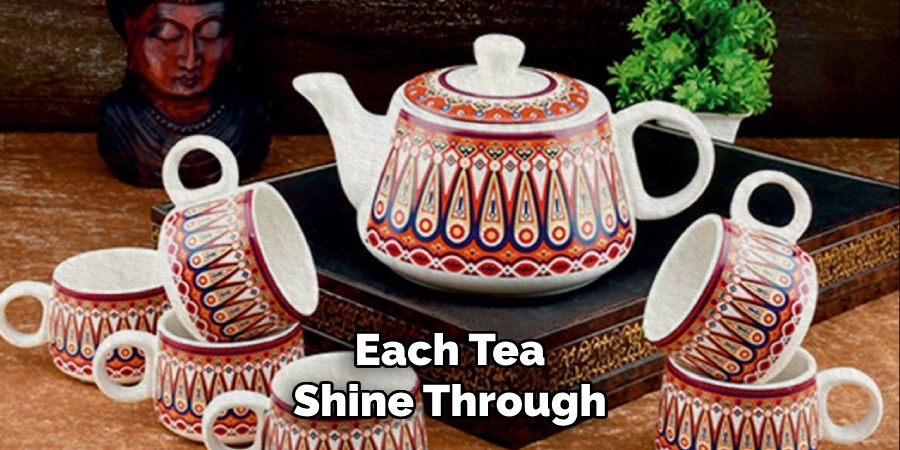
Conclusion
Using a porcelain teapot elevates the tea-making experience, combining functionality with timeless elegance. Key steps in mastering how to use porcelain teapot include proper preparation by pre-warming the teapot, precise brewing to suit the tea type, graceful serving to enhance the experience, and routine maintenance to ensure longevity.
Exploring a variety of teas and techniques allows you to discover unique flavors and refine your craft. A porcelain teapot enriches your tea’s quality and brings an artisanal touch to each brew, transforming a simple beverage into an artful ritual. Enjoy every sip of this refined tradition.
Professional Focus
Harry Ciotti is a highly skilled kiln operator with a sharp eye for detail and an in-depth understanding of the firing process. His expertise ensures that each ceramic piece reaches its full potential, perfectly balancing strength and beauty. Harry takes pride in overseeing the final stage of pottery creation, transforming raw clay into durable and stunning works of art.
About the Author
Harry Ciotti is a dedicated kiln operator and ceramic artist who brings passion and precision to every piece he fires. With a deep commitment to craftsmanship, Harry ensures that every ceramic creation is fired to perfection, from delicate vases to robust sculptures. He not only operates the kiln, but understands the unique needs of each piece, ensuring it reaches its full artistic potential. Through his work, Harry blends precision with artistry, making every firing a story of transformation.
Education History
University: California College of the Arts
Degree: Master of Fine Arts in Ceramics
Harry’s advanced education in ceramics has refined his technical skills, particularly in kiln operation, firing processes, and ceramic artistry. His educational background equips him to produce top-quality ceramic pieces that reflect both technical excellence and artistic expression.
Expertise:
- Kiln Operation and Firing Techniques
- Ceramics Creation (Functional and Artistic)
- Precision Craftsmanship
- Glazing and Texture Techniques
- Ceramic Artistry and Storytelling
